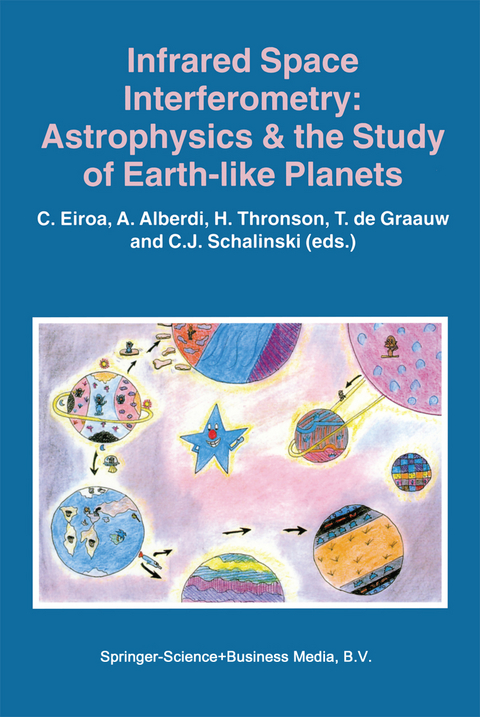
Infrared Space Interferometry: Astrophysics & the Study of Earth-Like Planets
Springer (Verlag)
978-94-010-6300-5 (ISBN)
1. Scientific Case.- The formation of planetary systems (invited).- High resolution spectroscopy of Vega-like stars.- Infrared observations of planetary atmospheres (invited).- Detection of planets via microlensing (invited).- Detection of planetary spectral features through circumstellar dust: a montecarlo simulation.- Evolution and spectra of extrasolar giant planets (invited).- Life signatures on exoplanets (invited).- Molecular gas production in the ?-Pictoris disk.- Planets in CM-Draconis: a multi-site photometric search.- Epicurus was right: other worlds exist! (invited).- Array configurations to detect and characterize extrasolar planets with a space infrared interferometer.- Resolving disks in YSOs (invited).- Ground-based optical/IR long baseline interferometry (invited).- Infrared interferometry with the VLTI.- Imaging with a space-based infrared interferometer (invited).- Infrared interferometry of active galaxies (invited).- Dusty disks around main sequence stars (invited).- Comet-like bodies around the Herbig Ae star BF Ori.- Stellar death: ejecta and circumstellar matter (invited).- 2. Instrumental and Technical Cases.- Kilometric baseline space interferometry (invited).- The measurement of directional radiative properties with applications to passively cooled space telescopes.- Concepts for a precursor space interferometry mission with a microsatellite.- Light weight SiC foamed mirror for telescope to be operated in space.- Recent advances in cryogenic optics technology for space infrared telescope and interferometer systems (invited).- Interfero-coronagraphy using pupil ?-rotation.- ASIX: the ASTRO-SPAS interferometer experiment.- Passive cooling of infrared interferometers in space (invited).- FLITE: free-flyer laser interferometer technologyexperiment.- Advances in satellite data compression and noisefiltering by virtue of parallel computing.- Design of infrared space interferometers (invited).- The next generation space telescope (NGST).- High accuracy optical visibilities on long baselines: first results and prospects.- The COAST project (invited).- Prospects for direct imaging from the ground (invited).- Active cooling systems (invited).- Space interferometry mission (invited).- The infrared imaging surveyor (IRIS) project.- Planet finder options II (invited).- Planet finder options III (invited).- Workshop Summary (invited).- Object Index.- Author Index.
| Reihe/Serie | Astrophysics and Space Science Library ; 215 |
|---|---|
| Zusatzinfo | XVI, 322 p. |
| Verlagsort | Dordrecht |
| Sprache | englisch |
| Maße | 160 x 240 mm |
| Themenwelt | Naturwissenschaften ► Physik / Astronomie ► Astronomie / Astrophysik |
| ISBN-10 | 94-010-6300-1 / 9401063001 |
| ISBN-13 | 978-94-010-6300-5 / 9789401063005 |
| Zustand | Neuware |
| Haben Sie eine Frage zum Produkt? |
aus dem Bereich


